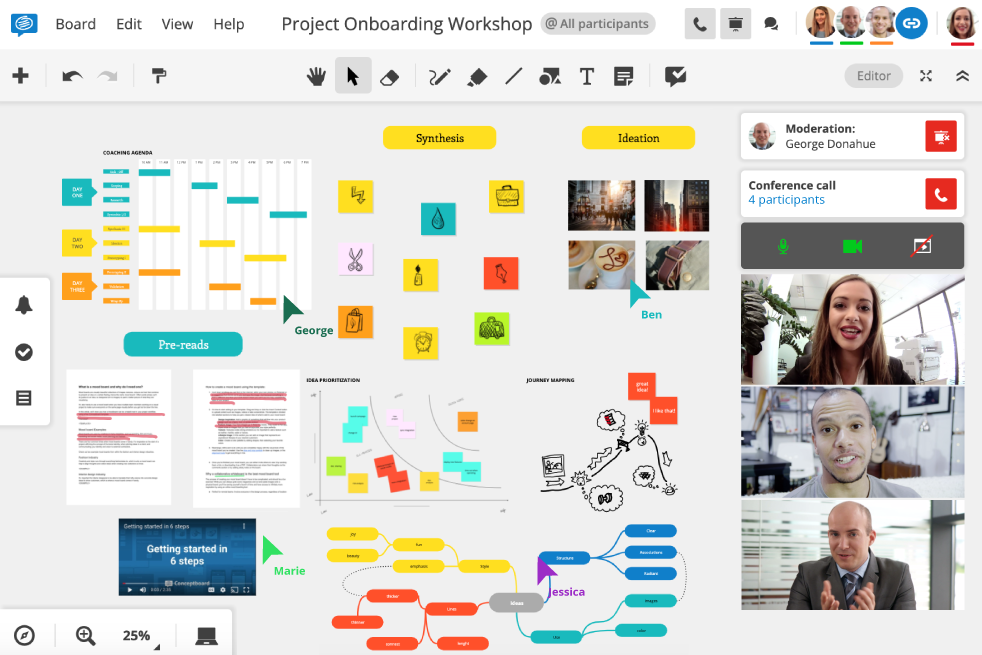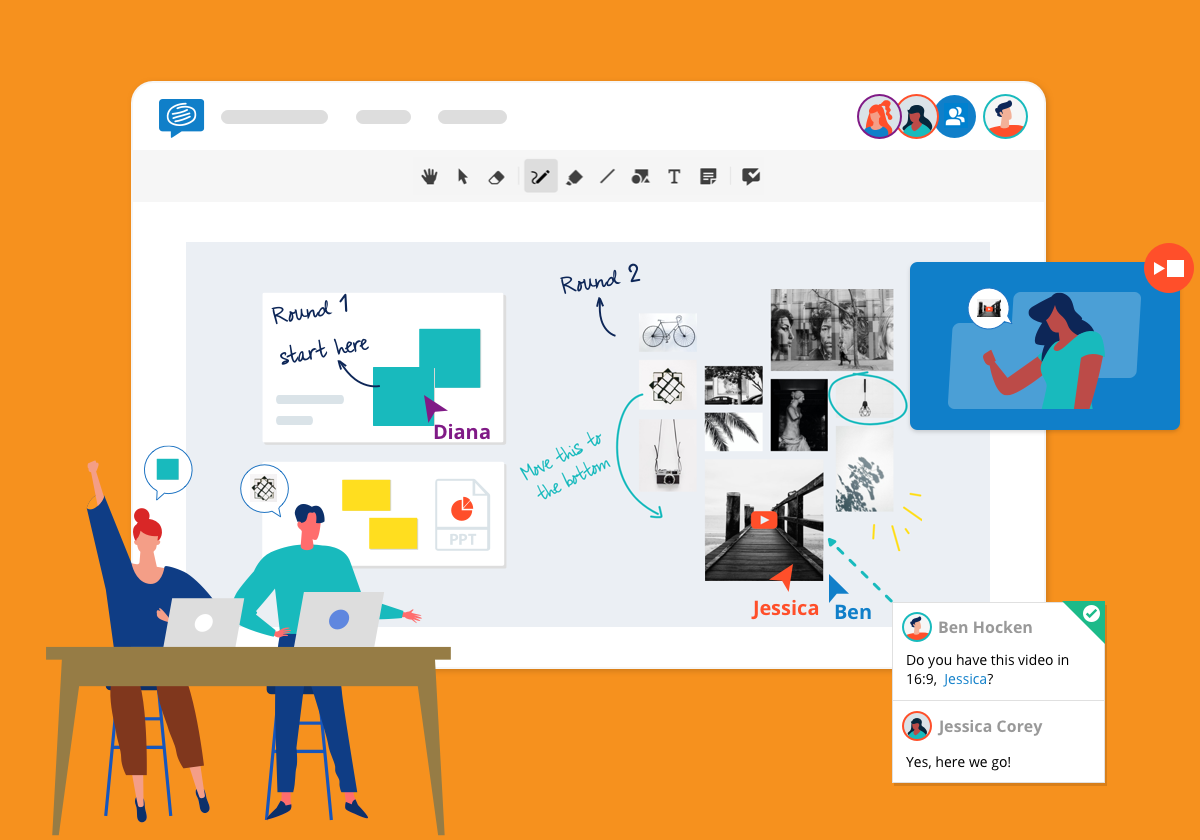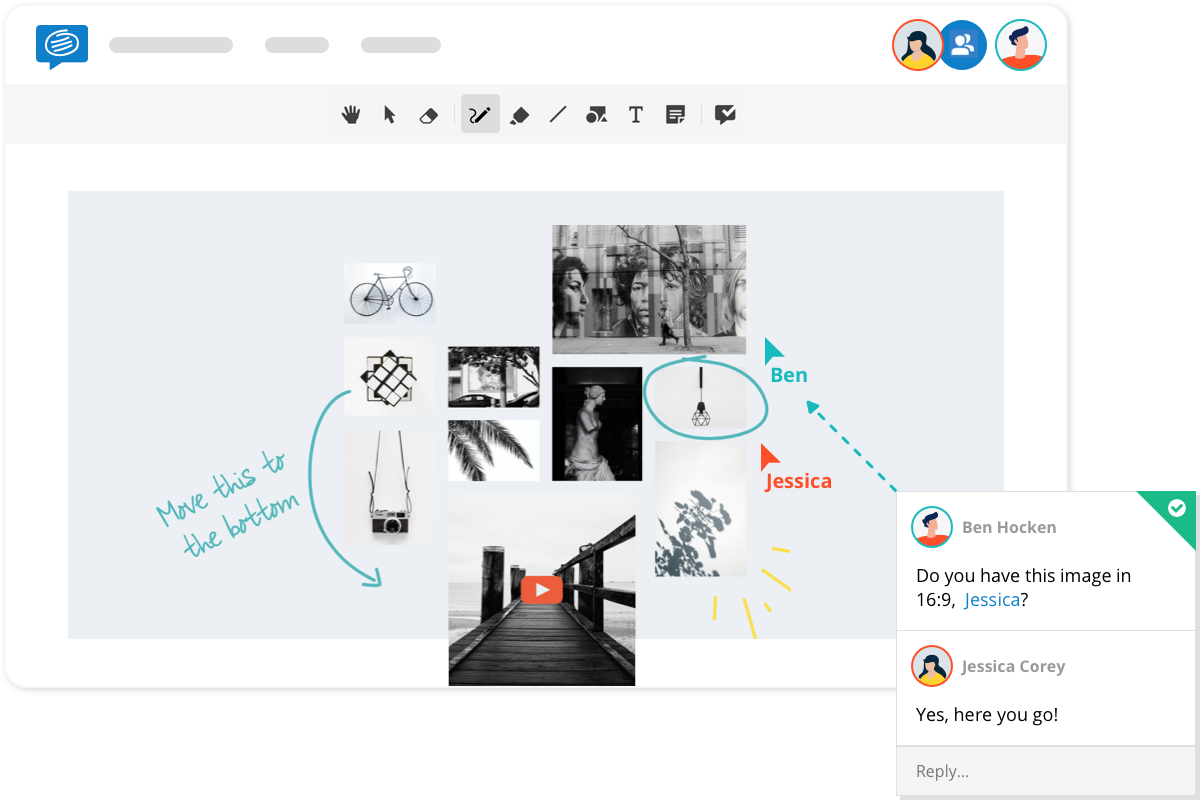Great communication technology is the secret to successful remote work arrangements. It’s so important that three out of the top four applications remote employees use are for communicating with others in the company. This is because, unlike those who work in traditional offices, remote workers rarely have the chance to clarify what they mean face-to-face. And if their technology fails them, they don’t have the support of an in-person IT team to help them work through the interruption.
As your organization considers which communication technology is the best fit for your off-site colleagues, it’s equally important to evaluate not only what tools you should use but how you decide to use them. To maximize the potential benefits of the services you use, you should consider how each one fits into the synchronous or asynchronous binary. Both of these types of communication serve a different, though valuable, purpose in the workplace.
In this article, we’ll discuss the difference between these two channels of communication, and how you can use both to further develop your remote communication strategies.

Synchronous vs. Asynchronous: What’s the Difference?
Before getting any further, you might be wondering: what are synchronous and asynchronous communication? Though you might be unfamiliar with the terms themselves, they prove to be quite simple in concept. Defined by its immediate nature, synchronous communication is the real-time conversations that occur between two or more people at work. Alternatively, asynchronous communication is when two or more people are interacting at separate times, without an active or physical presence.
Regardless of your position or the type of company you work for, you likely already use both synchronous and asynchronous channels at work on a daily basis. What you might not do, however, is use them correctly. What type of information is best shared in the immediate moment, over a phone or video call? And when is it better to carry a conversation where participants are able to respond at their leisure?
Let’s examine the advantages and disadvantages that distinguish synchronous and asynchronous communication from one another, as well as the tools and resources that make them possible.
Conversations in Real-Time
Before the widespread adoption of business technology, nearly every type of communication in the workplace was synchronous, as employees had no choice but to work together and communicate in-person. Just as these tech innovations paved the way for remote work arrangements, so too did they create new pathways for teams to continue communication synchronously—even when they were not physically present.
A great example of software that enables remote synchronicity is a collaborative online whiteboard, which allows remote teams to visually organize information and collaborate both synchronous and asynchronous. Equipped with customizable templates, widespread accessibility through the cloud, and the ability for multiple users to interact simultaneously, virtual whiteboards support synchronous communication where it is perhaps most important: during the brainstorming and ideation phases. Users can also leave feedback in context, assign tasks and follow progress for a seamless asynchronous collaboration experience across locations and timezones.
So much of the innovation process depends on the real-time input you receive from others, teammates bouncing ideas off of one another until you collectively uncover a solution to whatever challenge you are trying to overcome. For remote teams that struggle to work together in sync with each other, these virtual platforms provide the same sense of dynamism as an in-person meeting.
Beyond brainstorming meetings, synchronous communication is also most advantageous when you need to discuss complex issues or situations that warrant more than a lengthy email. To ensure that everyone on your team hears the information accurately, understands its implications, and is able to ask any questions they might have, the best tool for the job is a real-time video conferencing service. This technology helps businesses translate any in-person meeting that they would have otherwise scheduled into a remote-friendly alternative.
Video meetings are a great example of synchronous communication at its best because they utilize all of the benefits that come with holding a conversation in-person. From gesticulating your point of view to your tone of voice, so much of how we interact can be lost when we aren’t holding conversations in real-time, face-to-face. Virtual meetings give distributed teams the opportunity to connect and collaborate with fellow professionals through both visuals and audio.
Intermittent Collaboration
If synchronous communication provides so many advantages for off-site collaborators, where does asynchronous communication play into your remote strategy? Is it ever valuable to carry on a conversation that isn’t happening in real-time?
The simple answer is yes. Asynchronous communication offers several avenues for communication that are crucial to keeping your workflows and procedures standardized and timely. Although their functionality branches far beyond just communication, project management tools highlight some of the key strengths of infrequent or intermittent dialogue.
As the name suggests, project management platforms are designed to help you map out resources, timelines, and specific steps necessary to bring a task from fruition to completion. These tools visually show who is responsible for what, and task owners are able to communicate when they accomplish these assignments. And whenever these tasks are completed—no matter the time of day—users can announce this change to the larger team by updating their management software.
Another familiar piece of technology in the asynchronous communications catalog is the company chat platform, which is similar in functionality to texting or emailing. These messaging services, which are known for their informal nature, are in most cases the wrong channel to hold in-depth discussions or presentations, but that does not mean they are without benefit.
In fact, these more relaxed channels are the perfect place to ask a quick question or provide a short update on the day’s events. Because they are asynchronous, the sender is not expecting an immediate response, and the receiver is able to think of their reply back on their own time. The option to communicate when you have time for it is particularly valuable when you’re already having a busy day or are conversing with colleagues located in other timezones around the world. Unlike synchronous communication channels, chat messaging is also referential; users can revisit old conversations to refresh themselves on an unfamiliar topic, and team leaders can chat specific, direct, and measurable objectives to the individuals on their teams.

Discover visual collaboration
Now that you have a further understanding of synchronous and asynchronous communication systems, how do you plan to change the way your remote teams use their communication tools?





